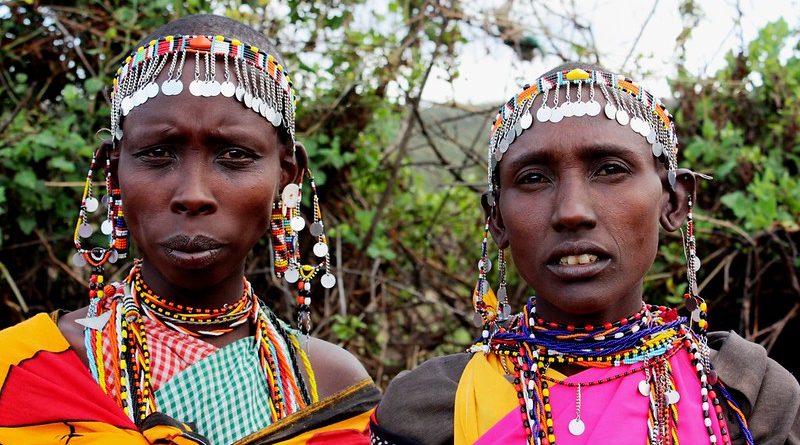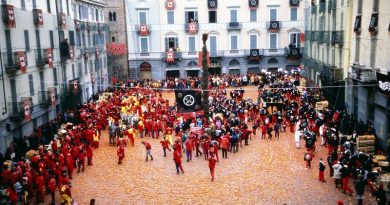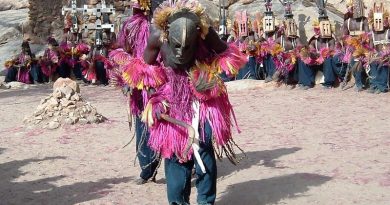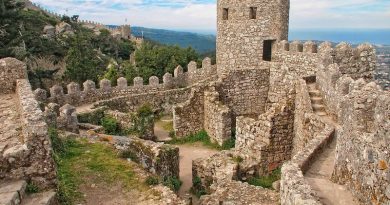Beautiful Warrior: The African Masai Tribes
Culture Facts
Where: Kenya and Ngorongoro Crater, Tanzania
Known for: Hair plaits, iron necklaces and fierce warriormanship
Lifestyles: Based around cattle herding and warrior manship
Experience: You can visit a ‘fake’ Masai village set up for tourists to get a feel of their lives and rituals
The Masai are more commonly associated with Kenya, but they’ve been a presence around the Ngorongoro Crater of Tanzania for over a 150 years and are the area’s main residents. Traditionally nomadic cattlemen, in recent years they have been encouraged to make settlements.
Lives and Rites
The lives of the Masai centres around cattle herding. They believe God entrusted the cattle to the Masai people, and wealth is measured in number of cattle.
They are known for their tradition of hair plaits, heavy iron necklaces, and fierce warriormanship, often depicted carrying a spear. The Masai’s unique hair is a clear living symbol of their tradition and culture. By wearing the plaits, it proves the individual is a true Morani sticking to their own traditions.
The Masai drink cows blood which they believe makes the body stronger and warmer and is good for children and the elderly to build up their strength. It is often drunk mixed with the milk of the cow.
Homes
Each village or “kraal” consists of around ten huts surrounded by a thornbush fence which acts like barbed wire, protecting the tribe and animals against enemies. The huts are built using branches, twigs and grass with a cement of cow dung and urine, and inside animal skins and cushions of dry grasses create a cosy interior.
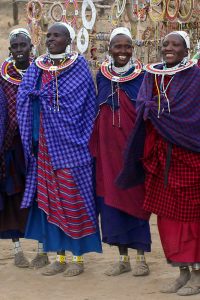 People
People
The women of the tribe are always busy, building huts, milking cows, fetching water (often from many miles away), hollowing out gourds to store foods inside, and decorating gourds and making elaborate jewellery. A woman is by birth a member’s of her father’s family line and cannot own land or cattle. They are minors in society, always represented by their father, and later their husband. If a woman has no sons in her marriage she will be scorned and forced to beg in her old age as she will have no possessions or money and no one to care for her.
For the boys, fifteen is the coming of age ritual, when they become circumcised and become Morani (young warriors), formally they would hunt a lion with a spear during the rites of passage ceremony but lion hunting is now illegal.
Children of the tribe have importance in rituals like rainmaking during a drought when the children sing for the rain. Playing “sheeps and goats” is a common game for children, an equivalent of “cowboys and Indians”. Teenage boys make trouble playing with the cattle and playing “knock down ginger” with a cow replacing the door!
Sexuality Laws
The sexual laws of the Masai are complex but obey a strict morality; the warrior will take a “dito” lover who is a prepubescent girl but cannot marry until he has complete his service to the tribe, at which time he will often be in his thirties. When the dito starts puberty (and is able to conceive) she is returned to her mother until she is able to marry. Before her marriage she will be circumcised, and never know sexual pleasure, only sexual pain, in her lifetime. Whatever her age, she is then considered a woman in the eyes of the tribe. This practice of female circumcision, known in the West as female genital mutilation, is now outlawed in Africa, although over half of the Masai still practice it in secret and women will then wear the traditional ear rings and iron necklace to signify her rank. However, if an older man takes a child lover this is a serious crime punished with beating and slaughter of his cattle.
Tourism
Nowadays, Masai boost their income by selling beads to tourists. In a curious way, tourism helps the Masai to retain and develop the Masai culture by transforming their believes into a business. The ceremonies you will see being performed as a visitor are traditional but they are staged for the tourist audience. It doesn’t destroy the Masai culture because the tourists don’t change the fundamentals of Masai living, only observe, whilst helping to rejuvinate centuries old customs.
To visit a Masai tribe usually involves some kind of payment. Many of the villagers are set up with the cow and the dancing strictly for tourism. The real Masai actually live about ten miles that way and the last thing they want is tourists traipsing around their village and interfering with their culture.
Despite modernisation in Africa, the Masai have not strayed from their customs, practiced within sight of Nairobi’s tower blocks. They have dominated East Africa by force of arms. They are the exasperation of modern Africa, but also command respect and fear of their renowned strength, bravery, beauty and discipline. As a race they are under threat with the new postcolonial African government’s aim to unite, or rather to disintegrate, the different tribes and the Masai’s hunting grounds and environments are constantly under threat.
MORE INFORMATION
Masai
Short academic essays on the huts and lives of the Masai.

